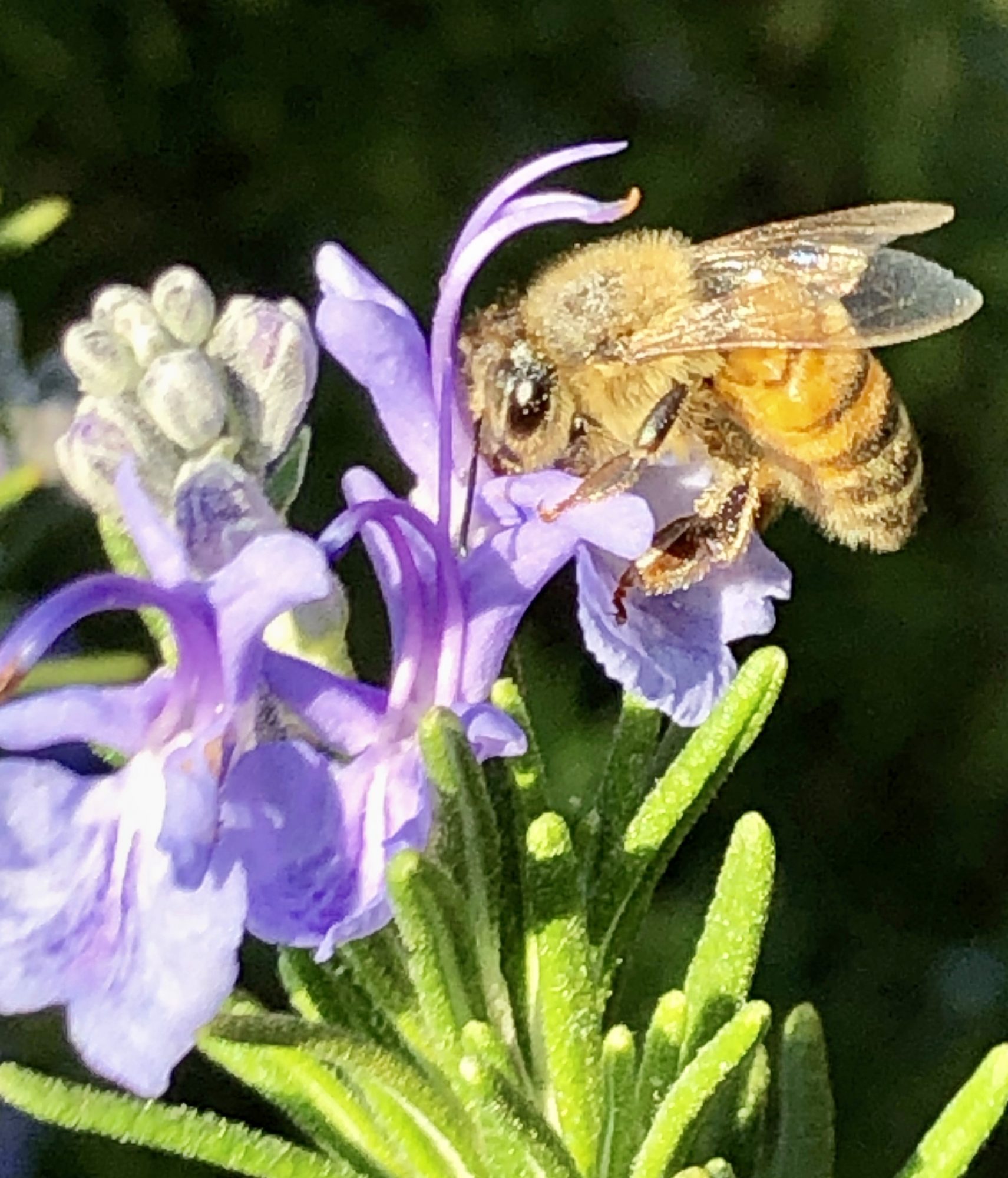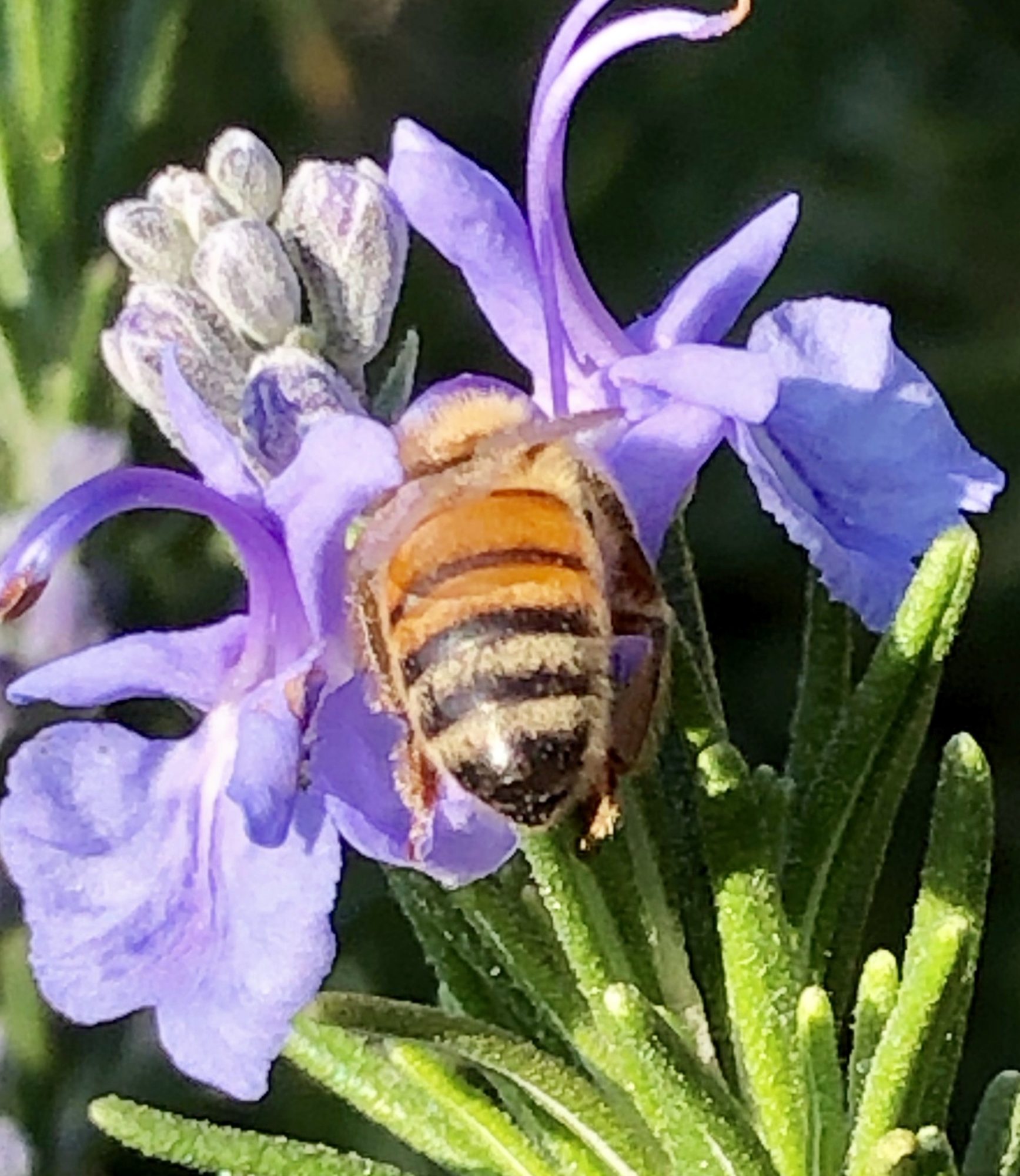Yeah, I’m a European honey bee. That’s Apis mellifera to you.
Uh, yeah, I live in California… And? You got a problem with that, Mr. Pointy-Head?
Oh, that‘s it. I’m not a California native bee. Well, excuuuuse me.
And what makes you think “native” bees are so great? Well, first of all, they don’t even live in hives, like normal bees. And did you know that some of those so-called “bees” actually live in the ground for God’s sake? I ask you – what kind of a bee lives in the ground? By itself? A weirdo bee, that’s who.
And don’t even get me started on honey. You know they don’t make honey, don’t you? I mean, what’s the point? Can you really even call them bees if they don’t make honey?
Huh? There are 1,600 species of bees native to California? Ooh, Fun Fact! Sounds like a waste of a lot of perfectly good pollen to me. They’re important pollinators? And European honey bees are crowding out the poor, little native bees? Okay, wait a minute. Back it up, Pointy. You happen to be talking to an “important pollinator.” And as for crowding out those weirdos? I have three words for you: Boo fucking hoo.
And since you’re such an expert, I’m sure you know that European honey bees first arrived on the West Coast back in 1853. We came by boat, all the way from New York. Okay, it’s not exactly the Mayflower, but come on, it’s not like we just got here. European honey bees have been in California for over 160 years– end of discussion. So don’t talk to me about ruining the neighborhood.
And anyway, if it wasn’t for us, you could kiss California’s $50 billion agriculture industry goodbye. No, I’m not just talking about honey. I’m talking about the farms, the orchards, all those miles and miles of almond trees in the Central Valley. Well, how did you think they get all those almond blossoms pollinated in the middle of fucking nowhere? The almond farmers import hives by the truckload, year after year. You didn’t know that, did you Pointy?
Actually, if you happen to like almond blossoms, it’s not all that bad up there. But let me tell you, there is nothing else out there to pollinate. Almonds, almonds, almonds.
“Monoculture”? I swear, you and your $5 words. What the hell is a monoculture?
Yeah, well you need lots and lots of almond trees if you want almond milk. No room to plant anything else. Not cost effective.
Uh huh, that’s right. They have to move us somewhere else when the almonds are done flowering for the year. So what if a lot of bees get sick and die from being shlepped from one farm to another and thrown together with a lot of other bees from God-knows-where? Hey, it’s the cost of doing business.
Pesticides? Not my problem. Sounds like fake news, anyway.
Oh, here we go… Yeah, what about water? It takes one gallon of water to produce a single almond? Oh, great – another fun fact. Uh huh, and it takes a bazillion, imported European honey bees, too. So? Look – do you want that almond milk decaf latte or not?
And while I’ve got your attention, Pointy: for the love of God, could you please stop pulling up all those fantastic, imported weeds in your garden? Why? Because – HELLO – I’m a European honey bee. And that doesn’t mean I enjoy lighting up a Gitanes after my plat de fromage. It means I love European weeds. You could say I’m drawn to them. So what if I’m spreading weeds? Why wouldn’t I pollinate them? You know, comfort food.
Look, I’d gladly pollinate all those candy-ass Lupines in your yard, too – if I could just figure out how to get into the damn things. Epilobium? No fucking way I’m going to get my big, fat, European bee ass into one of those.
You know, come to think of it, much as I love all those weeds in your garden, you should really think about putting in a few lavender bushes, maybe a rosemary or two. Love those Mediterraneans, Baby! Hey, how about a lemon tree?
You what? You only plant California native plants? No wonder your garden sucks shit.
But seriously, Pointy – just one, little lemon tree. And while you’re at it, make it a Eureka.
– Eric Ameria
© 2021 by LA Native Plant Source
To the Editor:
I was shocked and appalled that you would have thought it appropriate to devote space on your blog to a very hostile European honey bee and allow him to spew his crude and demeaning comments about California native bees all over the internet. While I acknowledge Mr. Mellifera’s right to his own opinions, however misinformed, there is no obligation on your part to provide him with a platform for his willfully ignorant diatribes. It is an indisputable fact that European honey bees are outcompeting other bees in the state. As a Yellow-faced bumblebee and a proud member of the California native bee community, it is adding insult to injury to be disparaged as a “weirdo” by this extremely ill-informed, foul-mouthed, nouveau venu. (1853, indeed!)
We are all pollinators.
Sincerely,
Dr. Bombus Vosnesenskii, Ph.D.
To the Editor:
I noticed with interest, your recent interview, “A Honey Bee Speaks,” in which your interviewer asserts that it takes “one gallon of water to produce one almond.” While that may be true – as is the fact that commercial almond orchards use roughly 10% of California’s annual water supply – it takes even more water to grow alfalfa, which is, by far, the most water-intensive crop grown in the state’s Central Valley. In fact, California’s alfalfa farms consume more than 1.2 trillion gallons of water per year. What’s more, most alfalfa is grown as cattle feed, and it is a well-known fact that it takes 1,800 gallons of water to produce a single pound of beef.
Given that there are other agricultural products in the state that consume even more water than almonds, I feel it lies outside the bounds of fairness to draw attention to the California almond industry’s profligate use of water in a densely populated state that is increasingly prone to periods of severe drought.
Sincerely,
Alma Marzipanjian
Executive Director
Friends of the California Almond



